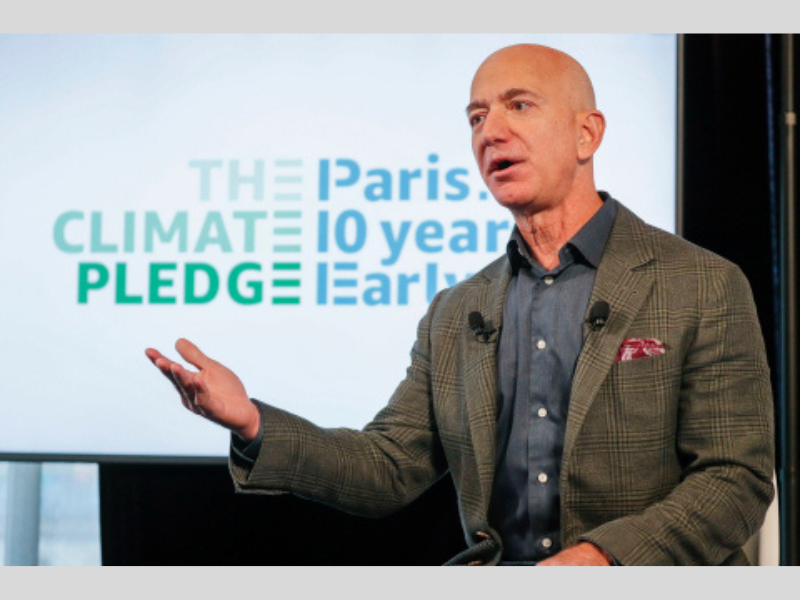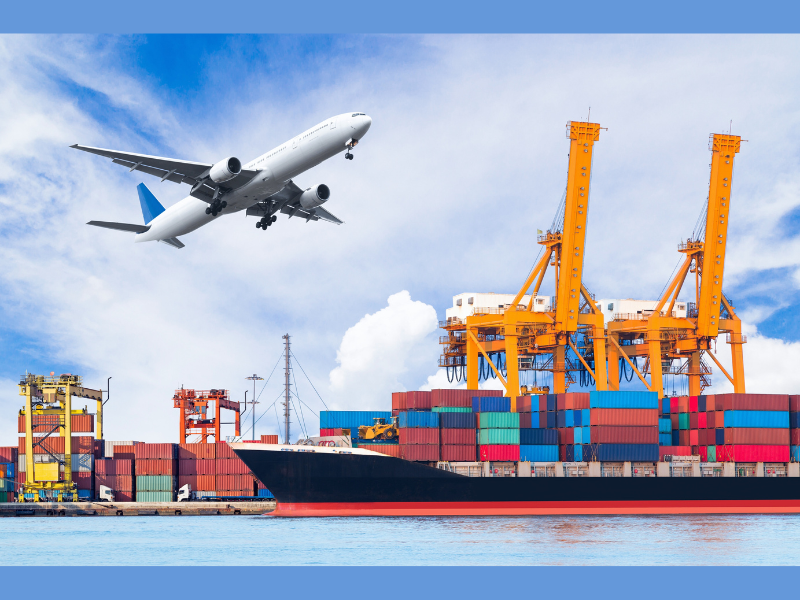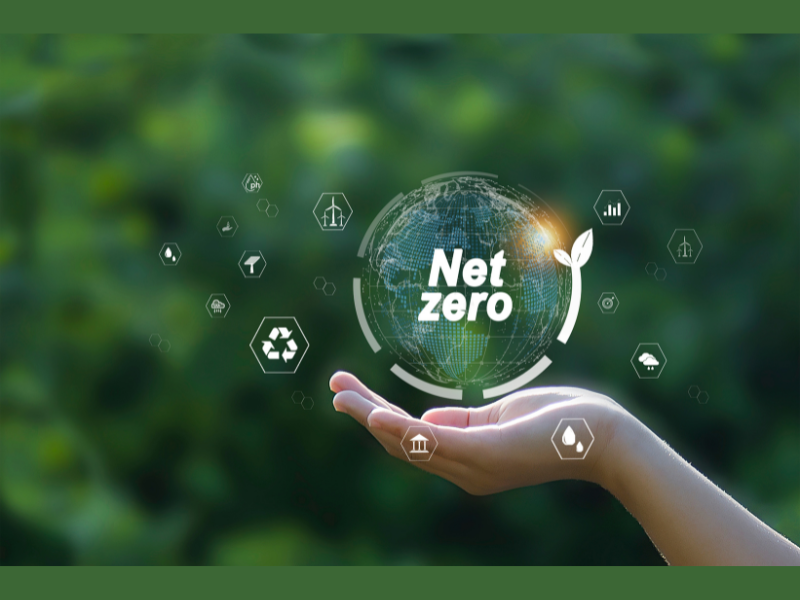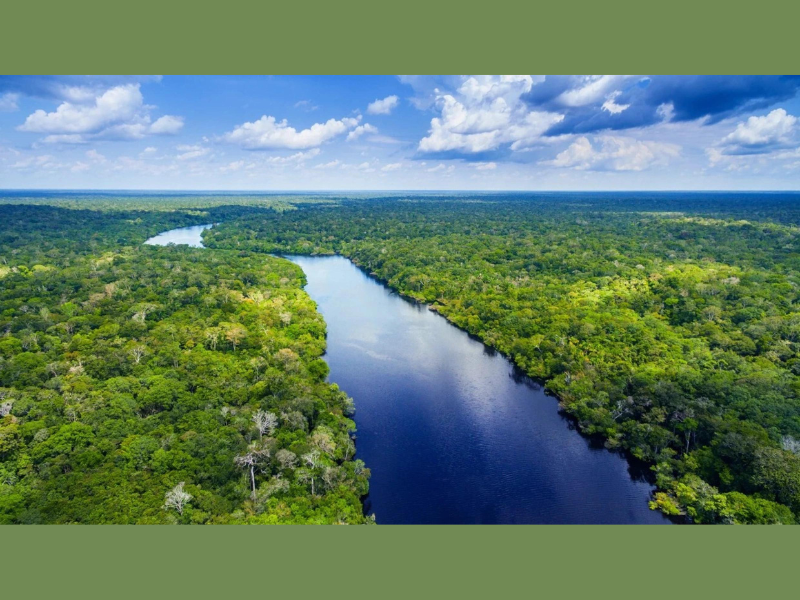In the era where environmental consciousness is on the rise, major corporations are stepping up with diverse commitments to make their share of mindfulness about the conservation of environment. Amazon Inc., one of the largest and most influential companies globally, has set an ambitious goal to become carbon neutral by 2040, a full decade ahead of the Paris Agreement targets (2050). This commitment reflects a corporate responsibility and a proactive stance towards addressing climate change. We will look into the multifaceted strategies Amazon has planned to achieve this humungous target.

The Climate Pledge Fund:
In 2019, Amazon and Global Optimism co-founded The Climate Pledge which was launched in 2020 with a commitment of USD 2 Billion and served as a pivotal initiative in the company’s broader strategy to combat climate change. This fund aims to accelerate the transition to a low-carbon economy by investing in innovative companies and technologies across various sectors. With a focus on renewable energy, energy efficiency, carbon capture and storage, sustainable transportation, and the circular economy, the Climate Pledge Fund seeks to drive impactful solutions that reduce greenhouse gas emissions and promote sustainability.

Unboxing Amazon’s carbon footprint:
Amazon’s carbon footprint encompasses three main categories of emissions: Scope 1, 2, and 3. Scope 1 includes direct emissions from operations like Amazon’s delivery fleet. Scope 2 covers emissions from purchased energy, such as electricity for facilities. Scope 3 includes indirect emissions from activities beyond direct operations, like packaging production and customer use of Amazon devices. To calculate its carbon footprint, Amazon considers various sources of emissions, including delivery fleets, energy usage, packaging, product manufacturing, customer device use, and more. The company evaluates emissions by multiplying the activity conducted by its appropriate emissions factor. This method provides a representative value for carbon dioxide emissions associated with each activity.

From baby steps to giant’s foot:
- Sustainable Packaging:
The proliferation of online shopping has led to a surge in packaging waste. Amazon aims to tackle this issue by optimizing packaging design to reduce material usage and increase recyclability. Additionally, the company is investing in innovative packaging solutions, such as biodegradable materials and reusable packaging options. As per reports published by Amazon, they have reduced the single-use delivery packaging by somewhere around 11.6 percent in 2022 across global operations.

- Investing in renewable energy:
Amazon is actively investing in renewable energy projects such as wind and solar farms to power its operations. The initiative, that has already had a major impact in that area, is an important aspect of its mission of transitioning to 100% renewable resources as part of its operations by 2030.

- Sustainable transportation and partnerships:
Amazon and IKEA are pushing the ocean shipping industry to adopt zero-carbon fuel sources by 2040. The International Maritime Organization has set an initial goal of cutting carbon emissions from international shipping by at least 50% by 2050. CATF (Clean Air Task Force) has proposed making marine ammonia from renewables, nuclear power, or carbon capture and storage operations. Amazon plans to buy 100,000 electric vehicles from Rivian and has already delivered over 20 million packages using electric vehicles.

- Carbon Offsetting:
While Amazon strives to minimize its direct emissions, some emissions are unavoidable. To address this, the company is investing in carbon offset projects, such as reforestation and renewable energy initiatives. These projects help neutralize Amazon’s remaining carbon footprint, ensuring that its net emissions reach zero by 2040.

Counting Carbon or Just Counting Cards?
Amazon’s reported carbon footprint has increased over recent years, contradicting its commitment to decarbonization. While the company highlights improvements in its carbon intensity publicly, its private reporting reveals less impressive figures, indicating a slower pace of progress compared to rivals.
As per reports, Amazon’s GHG emissions increased by around 18 percent in 2021, to 71.54 million metric tonnes of carbon dioxide equivalent, a 40% rise from 2019. Despite a reported increase in GHG emissions, it’s essential to recognize the complexity of the issue and the broader context of Amazon’s sustainability initiatives. The company’s pledge to achieve net-zero emissions by 2040 demonstrates a long-term vision for positive climate control. Criticism and scrutiny are integral parts of corporate accountability, and Amazon’s case is no exception. However, amidst the skepticism, there lies an opportunity for constructive dialogue and collaborative efforts towards meaningful climate action. As Amazon continues on its sustainability journey, it’s clear that counting carbon is more than just a numbers game—it’s a commitment to shaping a greener, more sustainable future for all. With continued transparency, accountability, and innovation, Amazon has the potential to be a driving force for positive change in the fight against climate change.

Charting the Path to a Greener Future:
Amazon’s pledge to become carbon neutral by 2040 is a monumental step towards a more sustainable future. By setting ambitious goals, investing in renewable energy, and embracing innovation, the company is demonstrating that corporate giants can be part of the solution to climate change. As other corporations follow suit, the vision of a carbon-neutral world by 2040 will become increasingly attainable.
Blog by Madhulika Pandey





















